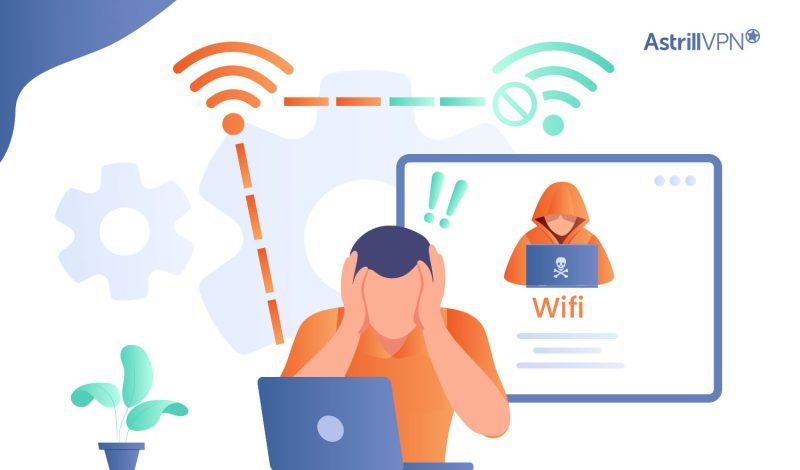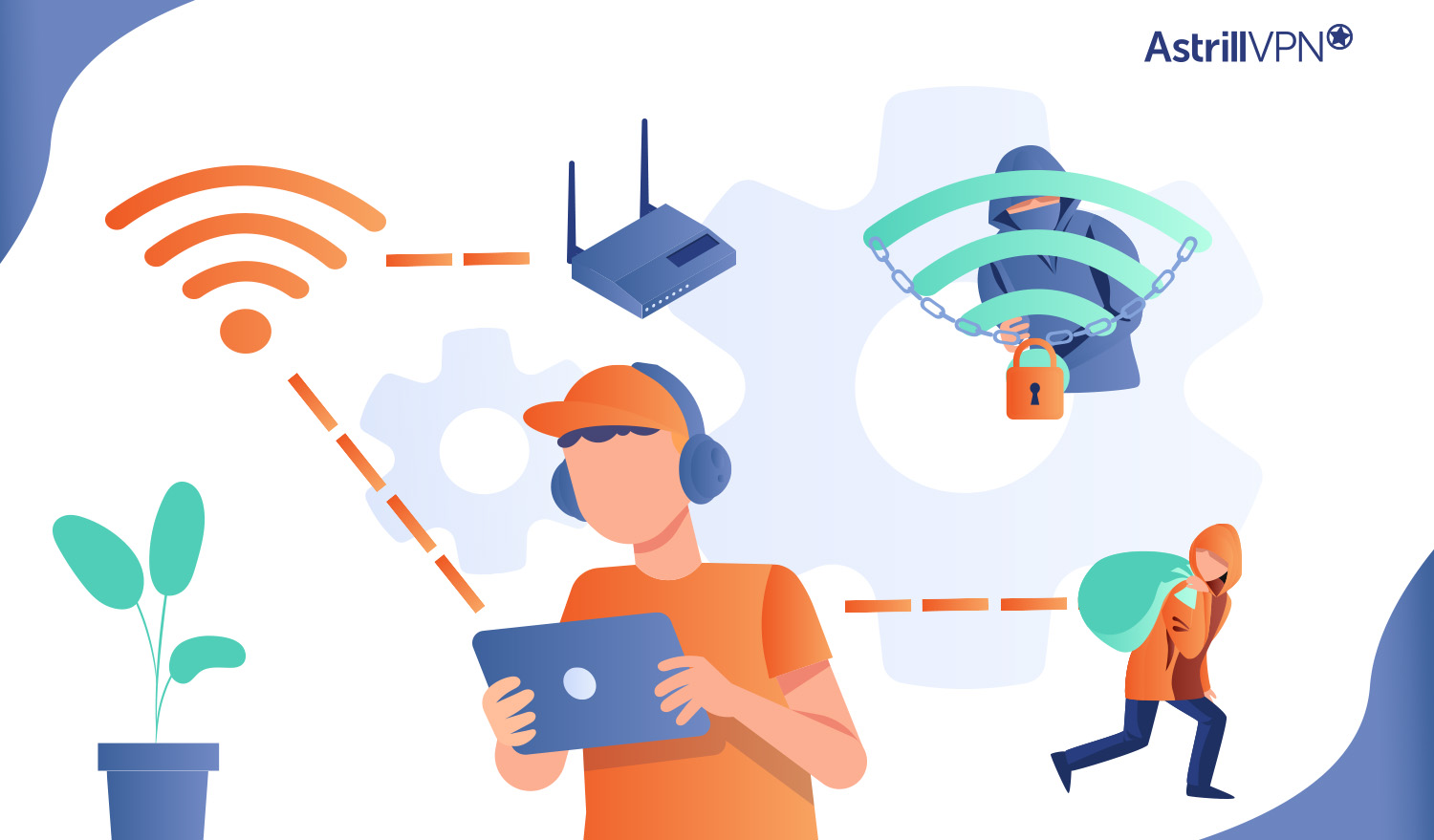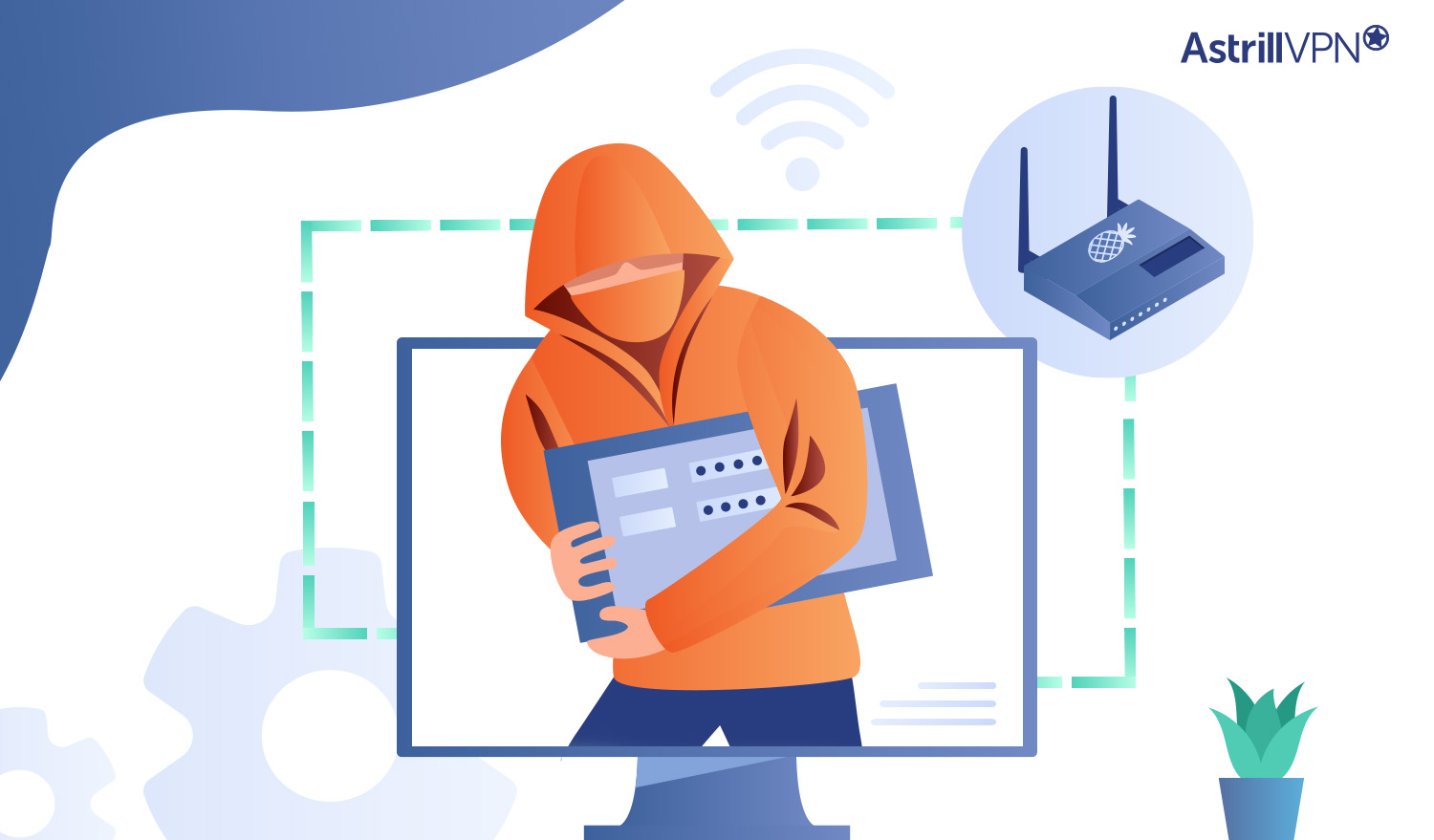Understanding Evil Twin Attacks and How to Prevent Them

Arsalan Rathore

Cyber attacks have become increasingly prevalent in recent years, with attackers always looking for new and innovative ways to compromise systems and steal sensitive data. One such attack that has gained notoriety is the Evil Twin Attack, also known as the Evil Twin WiFi Attack.
An Evil Twin Attack is a type of cyber attack in which a malicious actor sets up a fake wireless access point that appears to be a legitimate network. The attacker can then use this fake network to intercept and steal sensitive data, including login credentials, banking information, and other personal data.
It’s important to understand the risks of Evil Twin Attacks and how to prevent them, as they can result in significant financial losses, identity theft, and reputational damage. By taking proactive measures to secure your network and educate yourself on the dangers of these attacks, you can protect yourself and your business from falling victim to an Evil Twin Attack.
In this guide, we’ll take a closer look at what Evil Twin Attacks are, how they work, and what you can do to prevent them.
Table of Contents
What is Evil Twin Attack in Cyber Security?
Evil Twin attacks are cyber attacks where an attacker sets up a fake wireless access point that appears to be a legitimate network. The attacker then lures victims into connecting to this fake access point and stealing sensitive information. This attack is often used in public places like airports, coffee shops, and hotels, where people are more likely to connect to public Wi-Fi networks.
In cybersecurity, Evil Twin attacks are often used to gain unauthorized access to a victim’s device or network. Attackers can use these attacks to steal login credentials, personal information, financial data, or other sensitive information.
Some common types of cybersecurity threats that use Evil Twin attacks include:
- Phishing attacks: Attackers use a fake login page to trick victims into entering their login credentials.
- Man-in-the-Middle attacks: Attackers intercept and modify communications between the victim and the legitimate network.
- Password theft attacks: Attackers use fake login pages to steal passwords.
To prevent Evil Twin attacks, using networks secured by a VPN is important, and always be cautious when connecting to public Wi-Fi. Using strong passwords, up-to-date software, and security software like firewalls and antivirus programs is also important.
Characteristics of Evil Twin Attacks
There are several key characteristics of Evil Twin Attacks to be aware of. First, they use social engineering techniques to trick victims into connecting to the fake network. Attackers often create an environment similar to the real one, such as a coffee shop or airport, and create a fake access point with the same name. The fake network may have a stronger signal or be the only option to encourage users to connect.
Second, attackers often use tools such as packet sniffers to capture and analyze network traffic. Packet sniffers are software tools that can intercept and record network traffic passing over a network.
Once the attacker has captured the network traffic, they can analyze it to steal sensitive information such as login credentials, banking information, or other personal data.
Evil Twin Attacks can be used with other types of attacks, such as phishing, to steal sensitive data. Phishing attacks often use fake websites or email links to trick users into entering their login credentials or other sensitive information.
If an attacker can intercept the network traffic of a victim who has fallen for a phishing attack, they can easily steal their information.
Types of Evil Twin Attacks
There are three types of Evil Twin Attacks that attackers can use:
1. Ad-Hoc Networks:
In an Ad-Hoc Network Evil Twin Attack, the attacker creates an ad-hoc network with a similar name to a legitimate network, then tricks users into connecting to it. Ad-hoc networks are peer-to-peer networks that allow devices to communicate directly with each other without the need for a wireless access point.
To execute this attack, the attacker can use software such as AirCrack-ng or Wifiphisher to set up a fake network with a name similar to the legitimate network. The attacker can also use a wireless network adapter capable of running in monitor mode to capture and analyze wireless traffic for sensitive data.
Ad-Hoc Networks are often used in environments with no available access points or in situations where users may be more likely to connect to a peer-to-peer network. You can call if a free Wi-Fi hacking attack because this type of attack is particularly effective in public places such as coffee shops or airports.

2. Soft AP Attacks
A Soft AP Attack, also known as a “rogue access point” attack, is when an attacker sets up a rogue access point that broadcasts the same SSID as the legitimate network, then uses it to intercept traffic. The rogue access point can be set up using a wireless router or other wireless device.
To execute a Soft AP Attack, the attacker sets up the rogue access point with the same SSID as the legitimate network and sets the encryption and authentication settings to match those of the legitimate network. This makes it difficult for users to distinguish between the real and fake networks. Once users connect to the rogue access point, the attacker can intercept and analyze their network traffic.
Soft AP Attacks are commonly used in environments where there is no existing wireless network, such as conferences or trade shows, or in situations where users may be more likely to connect to an unsecured network.

3. Wi-Fi Pineapple
The Wi-Fi Pineapple is a small device that can create fake access points and intercept traffic. It works by spoofing the MAC address of the legitimate wireless access point, making it appear as if the device is the real access point. Once users connect to the fake access point, the attacker can intercept and analyze their network traffic.
The Wi-Fi Pineapple is a popular tool among hackers and has been used in various types of attacks, including Evil Twin Attacks and phishing attacks. Attackers can use the device to set up multiple fake access points with different SSIDs, increasing the likelihood that users will connect to one of them.

How to Prevent Evil Twin Attacks
1. Avoid connecting to unknown Wi-Fi networks
Evil Twin attackers often create fake Wi-Fi hotspots with enticing names to lure unsuspecting victims into connecting to their networks. Avoid connecting to unfamiliar Wi-Fi networks, especially those with weak or no passwords and those without encryption.
2. Verify Network Names
Always double-check the network name and SSID (Service Set Identifier) before connecting to any Wi-Fi network. Compare the name of the network with the name of the business or venue that is providing the Wi-Fi. Do not connect to the network if there is any difference in the name or the SSID.
3. Use a VPN
A VPN creates a secure, encrypted connection between your device and the internet. Using a VPN, all your online traffic is routed through a private server, which encrypts your data and hides your online activities from potential attackers. This makes it more difficult for attackers to intercept your data or manipulate your connection, making it an effective way to prevent Evil Twin Attacks.
AstrillVPN offers advanced security features such as military-grade encryption, a no-log policy, and a kill switch that automatically disconnects your device from the internet if the VPN connection is lost. These features make it difficult for attackers to intercept your data or manipulate your connection, providing a strong defense against Evil Twin Attacks.
4. Update your device and software
Keep your device and software updated with the latest security patches to prevent vulnerabilities that can be exploited by attackers. Regularly updating your software can help prevent attacks from malware, viruses, and other threats.
5. Use strong passwords and two-factor authentication
Using strong passwords and two-factor authentication can protect your accounts from unauthorized access. Choose unique, complex passwords that are difficult to guess, and use two-factor authentication wherever possible to add an extra layer of security to your accounts.
6. Disable auto-connect
Turn off auto-connect to Wi-Fi networks in your device settings to avoid automatically connecting to unfamiliar networks. This will give you more control over which networks you connect to and help prevent accidental connections to fake networks.
7. Use WPA2-Enterprise security
Wi-Fi networks with WPA2-Enterprise security are more secure than those with WPA2-Personal security, which is the standard for most home Wi-Fi networks. WPA2-Enterprise provides more robust security features and requires authentication from a central server, making it harder for attackers to create fake networks.
Rogue Access Point vs Evil Twin: The Difference
| Feature | Rogue Access Point | Evil Twin |
| Access Point Type | Legitimate or unauthorized | Always unauthorized |
| Objective | Gain unauthorized access to a network | Steal sensitive information or login credentials |
| Creation Method | Physical installation or hacking | Creating a fake access point attack through software |
| Network Discovery | Can be discovered using network monitoring tools | May not be discovered using typical network monitoring |
| Security Settings | Can have different security settings than legitimate access points | Security settings are designed to mimic legitimate access points |
| Location | May be located within range of a legitimate network | May be located anywhere within range of a targeted device |
| Risks | Network security threats such as data theft or hacking | Personal security threats such as identity theft or financial fraud |
| Identification | Can be identified through network monitoring and physical inspection | Can be identified by careful examination of wireless network details |
Rogue Access Points and Evil Twin attacks are both types of unauthorized access points that can pose serious security risks. Rogue Access Points are unauthorized wireless access points added to a network, while Evil Twin attacks are fake wireless access points made to look like legitimate networks.
While Rogue Access Points can be legitimate and unauthorized, Evil Twin access points are always unauthorized and designed to mimic legitimate access points. Rogue Access Points aim to gain unauthorized access to a network, while Evil Twin attacks aim to steal sensitive information or login credentials.
Identifying Rogue Access Points and Evil Twin access points can be challenging, but network monitoring and careful examination of wireless network details can help detect these threats. It’s essential to understand the risks associated with both Rogue Access Points and Evil Twin attacks, as they can lead to network and personal security threats such as identity theft or financial fraud.
How does an Evil Twin differ from a Rogue AP?
An Evil Twin and a Rogue Access Point (AP) are both types of fake wireless access points. Still, there are some key differences between the two:
| Evil Twin | Rogue Access Point | |
| Malicious | Yes | No |
| Mimics | Legitimate wireless access point | Legitimate wireless access point |
| Goal | Steal sensitive information | Bypass network security measures |
An Evil Twin is a type of attack where an attacker sets up a fake wireless access point that appears to be a legitimate network. The attacker then lures victims into connecting to this fake access point and stealing their sensitive information. The key characteristic of an Evil Twin is that it is a malicious network that is designed to look like a legitimate one.
On the other hand, a Rogue Access Point is a legitimate wireless access point that has been set up without the permission or knowledge of the network administrator. A Rogue AP can be used to bypass network security measures and gain unauthorized access to the network. The key characteristic of a Rogue AP is that it is a legitimate network that has been set up without authorization.
To identify whether a wireless access point is an Evil Twin or a Rogue Access Point, it is important to check the following:
- If the SSID is the same as a nearby legitimate network, it may be an Evil Twin.
- Check if the access point’s MAC address matches the legitimate network’s MAC address. If it doesn’t, it may be an Evil Twin.
- If the access point is in an unexpected location, it may be a Rogue Access Point.
Some Recent Examples of Evil Twin Attacks
Following are a few recent examples of Evil Twin Attacks:
- In 2021, a cybercriminal used an Evil Twin hacking attack to steal over $100,000 worth of cryptocurrency from a victim in Singapore. The attacker set up a fake Wi-Fi hotspot at a coffee shop, which the victim connected to, allowing the attacker to steal their login credentials and transfer the funds.
- In 2020, a hacker used an Evil Twin Attack to steal login credentials from users of a popular VPN service. The attacker set up a fake Wi-Fi hotspot with the same name as the legitimate hotspot used by the VPN service, tricking users into connecting to the fake hotspot and giving the attacker access to their login information.
- In 2019, a group of hackers used Evil Twin Attacks to steal credit card information from customers of a hotel chain, as reported by ZDNet. The attackers set up fake Wi-Fi hotspots in the hotel lobby and other public areas, tricking customers into connecting to the fake hotspots and stealing their credit card information.
- In 2018, a cybercriminal used an Evil Twin Attack to steal over $20,000 from a victim in the United States. The attacker set up a fake Wi-Fi hotspot at a conference, which the victim connected to, allowing the attacker to steal their login credentials and transfer the funds.
Impact of Evil Twin Attacks on Individuals and Businesses
Evil Twin attacks can have serious consequences for both individuals and businesses. Some of the impacts of these attacks include:
● Financial loss
One of the main impacts of an Evil Twin attack is financial loss. Attackers can use these attacks to steal sensitive information, such as login credentials and credit card details, which they can use to make unauthorized transactions or sell on the dark web.
● Reputation damage
If a business falls victim to an Evil Twin attack, it can lead to significant reputation damage. Customers may lose trust in the business if they learn that their personal and financial information has been compromised, and this can lead to a loss of business.
● Legal and regulatory consequences
In some cases, an Evil Twin attack may result in legal and regulatory consequences for the affected individual or business. For example, if customer data is stolen, the business may be liable for failing to protect that data and may face fines or legal action.
● Disruption of operations
If an Evil Twin attack is successful, it can disrupt the normal operations of a business or individual. For example, if login credentials are stolen, the victim may be locked out of their account and may need to spend time and resources recovering it.
● Privacy violations
Evil Twin attacks can also lead to online privacy violations, as attackers can access personal information and use it for malicious purposes, such as identity theft or blackmail.
What is a Malicious Hotspot?
A malicious hotspot is a fake wireless network created by attackers to trick unsuspecting users into connecting to it. The purpose of these networks is to steal sensitive information, such as usernames, passwords, credit card information, and other personal data.
Malicious hotspots can be set up anywhere, including public places like coffee shops, airports, and hotels, making them a serious threat to both individuals and businesses.
Attackers can use several types of malicious hotspots to carry out their nefarious activities:
- Evil Twin
- Man-in-the-Middle
- Ad-hoc Network
To protect against malicious hotspots, there are several best practices that individuals and businesses can follow:
- Use a VPN to encrypt your internet traffic and protect sensitive information from prying eyes.
- Always connect to Wi-Fi networks you trust, such as those provided by your workplace or a reputable service provider.
- Make sure that your device’s Wi-Fi is turned off when you are not using it to prevent it from automatically connecting to a malicious hotspot.
- Install a reputable anti-malware program on your device to detect and block malicious hotspots and other cyber threats.
Tips for Secure Wi-Fi Connectivity
1. Always use HTTPS
HTTPS (Hypertext Transfer Protocol Secure) is a protocol for secure communication over the Internet. It encrypts the data being transmitted between your device and the server, preventing attackers from intercepting and reading the data.
2. Disable File and Printer Sharing
File and printer sharing can make your device vulnerable to attacks from other devices on the same network. Disable file and printer sharing in your device settings to prevent unauthorized access to your files and data.
3. Use a Firewall
A firewall can help protect your device from unauthorized access by blocking incoming connections from unknown sources. Make sure your device’s firewall is enabled and configured correctly to protect your device from attacks.
Best Practices for Preventing Wi-Fi Attacks:
- Use a strong and unique password for your Wi-Fi network.
- Regularly update your router’s firmware and security settings.
- Disable WPS (Wi-Fi Protected Setup) on your router.
- Use MAC address filtering to restrict access to your network.
- Limit the range of your Wi-Fi signal to prevent unauthorized access from outside your home or business.
- Use a guest Wi-Fi network to separate your business or personal network from your visitors’ network.
- Monitor your network activity for any suspicious behavior or unauthorized access.
Conclusion
Evil Twin Attacks continue to pose a significant threat to both individuals and businesses. To prevent these attacks, it is important to be vigilant and take steps such as using a VPN, verifying the legitimacy of Wi-Fi networks before connecting, and keeping the software and firmware up to date.
By following the prevention techniques mentioned in this guide, individuals and businesses can minimize the risk of falling victim to Evil Twin Attacks. It is crucial to understand the threat of these attacks and to implement strong security measures to protect against them in today’s increasingly digital world.
FAQs
What are some common signs of an evil twin attack?
Common signs of an evil twin attack include unexpected network disconnections, slow network speeds, and the presence of multiple Wi-Fi networks with the same name.
Can an evil twin attack be carried out on cellular networks?
Evil twin attacks are typically carried out on Wi-Fi networks, although it is possible for attackers to create fake cellular networks as well.
Is it possible for an evil twin attack to occur on a secured Wi-Fi network?
It is possible for an evil twin attack to occur on a secured Wi-Fi network if the attacker has access to the network’s security key or passphrase.
What should I do if I suspect an evil twin attack?
If you suspect an evil twin attack, you should immediately disconnect from the Wi-Fi network and notify the network administrator or security personnel.
Can using a VPN protect me from an evil twin attack?
Yes, using a VPN can protect you from an evil twin attack by encrypting your internet traffic and preventing attackers from intercepting your data.
How can you tell whether one of the Wi-Fi networks shown here is an evil twin?
It can be difficult to tell if a Wi-Fi network is an evil twin just by its name. However, if multiple networks with the same name are in the same location or the network suddenly becomes slower or disconnected frequently, it may be a sign of an evil twin attack.


No comments were posted yet